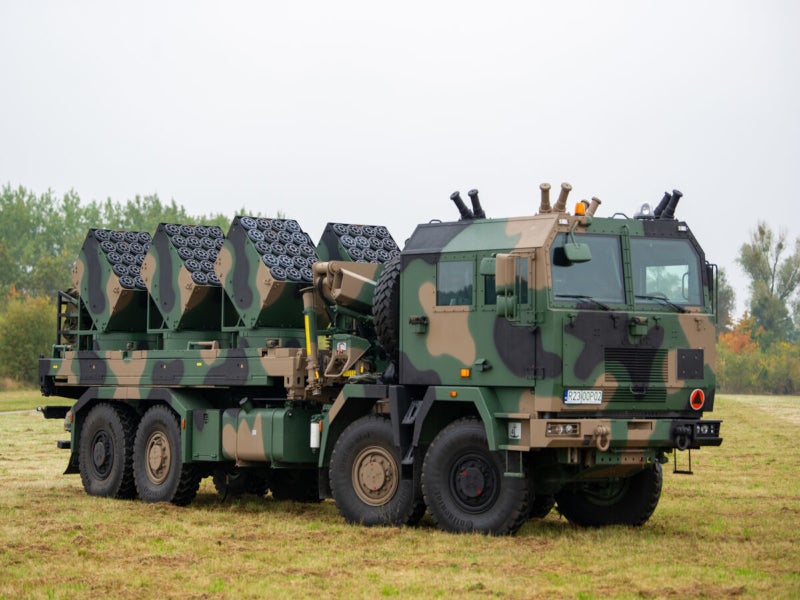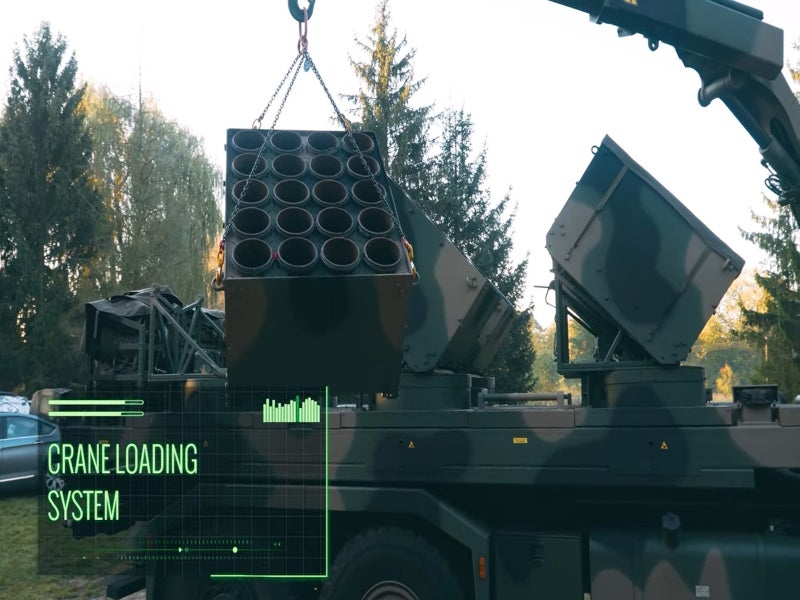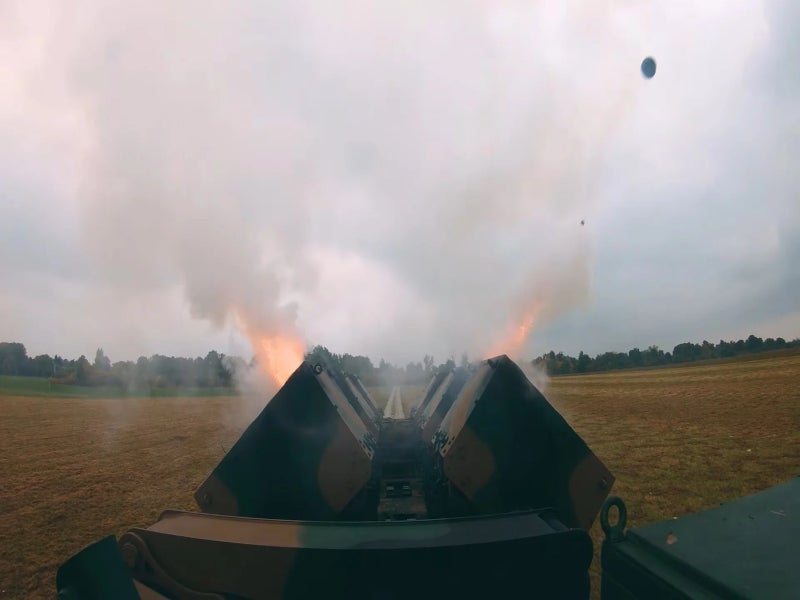Baobab-K is a new automated mine-laying system developed by Polish defence company Huta Stalowa Wola (HSW) and its partners. The system can be used to create scattered anti-tank barrier minefields of various sizes, densities, and self-destruction times.
A consortium led by HSW and comprising Jelcz, Belma, WB Group, and the Military Institute of Engineering Technology is responsible for the development of the system.
HSW, Jelcz, and Belma are the subsidiaries of Polish Armaments Group, a state-owned defence contractor. WB Group supplies the radio communications system, TOPAZ tactics minefield management systems, and electromechanics for Baobab-K.
The Poland Ministry of Defence’s Armaments Inspectorate (now Armaments Agency) signed a contract with the consortium to develop a Baobab-K vehicle prototype in December 2018.
The mine-laying system prototype was showcased at the XXIX International Defence Industry Exhibition MSPO held in Kielce, Poland, in September 2021. The project was completed with a positive qualifying test outcome in November 2022.
HSW signed a contract worth approximately 510m zlotys with the Armaments Agency to supply 24 Baobab-K scattered mining vehicles to the Polish Armed Forces in June 2023. The contract will be realised between 2026 and 2028.
Baobab-K mine-laying system design and features
Baobab-K is a truck-mounted mine-laying system that can be controlled from a ground control station. Its design is based on a Jelcz 8×8 truck chassis, which features high mobility and payload capabilities.
The fully automated minefield-laying process of the system allows it to quickly switch between transport and combat modes.
The vehicle can be equipped with six launchers (mine throwers), which can carry MN-123.1 and MN-123.2 programmable anti-tank mines manufactured by Belma. A crane can be used to load/unload the mine throwers on the ammunition vehicle.
Five anti-tank mines are loaded in a single mine cassette, while each launcher can be fitted with 20 cassettes to enable each vehicle to carry up to 600 mines. The system can be equipped with eight 81mm smoke grenade launchers.
Designed to be operated by tactical-level engineering subunits of the armed forces, the mine-laying system can be deployed to destroy armoured vehicles and other vehicles.
Mine-laying control and communications
The control system allows for mine-laying control and supervision of the process in automatic and manual modes.
In the automatic mode, an onboard computer is used to calculate parameters such as vehicle speed and launcher settings, as well as adjust the frequency of launching mines on the move.
The new ICT system integrated into the vehicle allows the visualisation of a minefield on a digital map for display on the computer screen.
The recorded data containing minefield parameters and coordinates can be further sent to a higher command level through radio communications.
MN-123 anti-tank mine details
The MN-123 anti-tank scatterable mines are designed to set up minefields, utilising the missile engineering mining system. Integrated with a double-acting cumulative charge and a non-contact igniter, the mine is triggered when a vehicle passes over it.
Jelcz truck chassis details
The Jelcz truck chassis has a length of 11m, a height of 3.4m, and a width of 2.6m. It has a combat weight of 31,700kg.
The 20ft container frame of the truck allows it to be used as a transport vehicle after dismounting the mine-laying platform.
The vehicle’s armoured cabin accommodates a two-member crew and offers STANAG 4569 ballistic protection up to level one.
Other subsystems aboard Baobab-K mine-laying system
The subsystems include a control panel for smoke grenade launchers, a tester for mine cassettes, a GPS and an odometer, a FONET intercom system for digital communication, and an RRC 9311AP very high frequency transceiver.
Mobility and performance
The truck has a range of 580km on off-road conditions and 1,650km on paved roads. It can attain a maximum speed of 85km/h.
The vehicle is equipped with a central tire inflation system, which allows it to operate in run-flat mode. It can ford depths of up to 1.2m, climb obstacles 0.3m high, and cross trenches of 0.6m.
Baobab-K can lay mines from the vehicle axis to a range of 30m to 90m at a speed between 5km/h and 25km/h. It can lay a minefield of up to 1,800m long with the potential to lay on the sides and rear of the vehicle.
The time required for laying a mine unit is less than 22 minutes, while the reloading time is less than 30 minutes.






